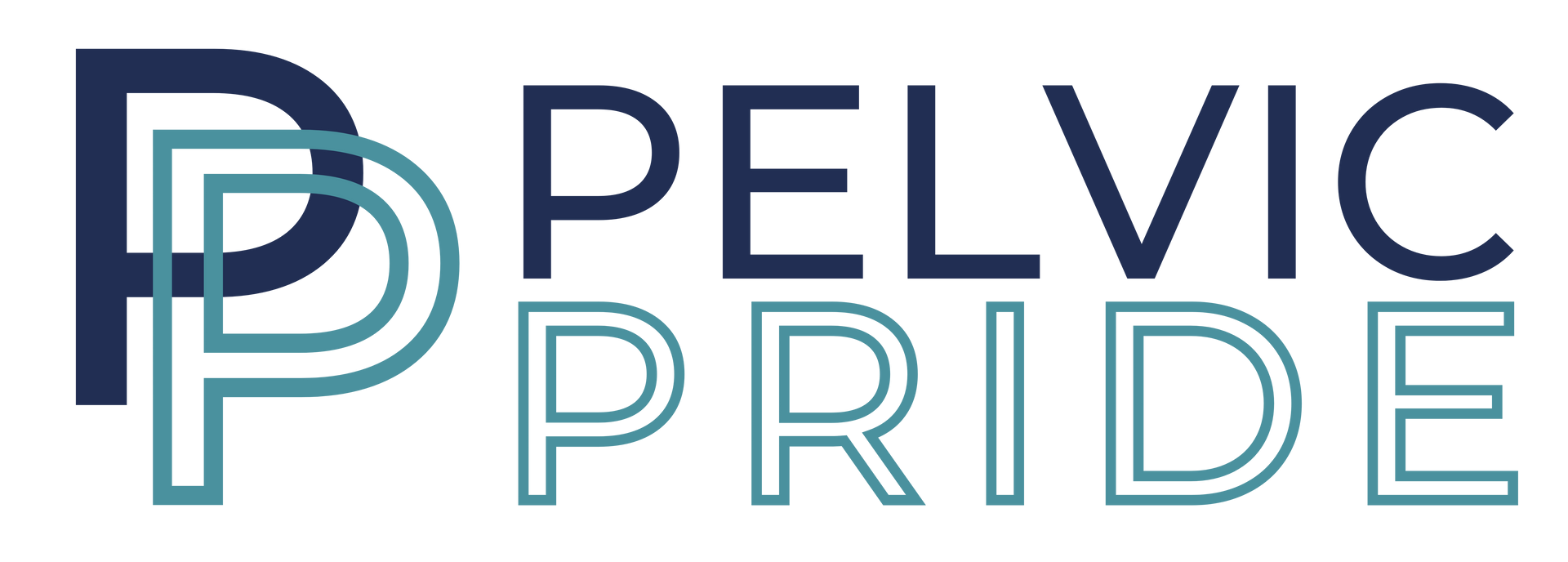
I mean honestly who does not like a list? And this one is going to tell you things to STOP doing to have a happier pelvic floor - what could be better?! Pelvic health has become all the rage lately thanks to social media so sometimes it is hard to figure out what to believe. Trust me, we hear all sorts of interesting suggestions on Google from patients trying to help themselves. Lucky for you, this list is evidence-based and coming to you directly from a Doctor of Physical Therapy (not that this is medical advice, always consult with your own medical team for specific questions). 1. Hovering Recently I was in a pilates class and the instructor cued us to squat like we are hovering in a porta potty. And you know what? Everyone knew exactly what she was referring to! But it isn’t just porta potties that we squat over. This happens frequently over standard toilets as well - but why? I get it, you don’t want to sit on someone else’s pee - eww . But the solution for that is simple: wipe it off. Or if you have enough time, build yourself a little nest out of toilet paper (or use one of those toilet covers that most bathrooms tend to be out of). The issue with hovering is that your pelvic floor muscles are not able to fully relax making it hard to go to the bathroom. It is also worth noting that hovering over a toilet is very different from squatting like people in other countries do when using the facilities. Getting into that deep of a squat is actually a great position for pelvic floor relaxation. So ditch the squat, take a few seconds to wipe off the seat or build a TP nest and sit down so your pelvic floor can relax. 2. ‘Just In Case’ Voiding We hear this ALL THE TIME! Patients frequently report they go to the bathroom ‘just in case’ when they are out in public, going for a roadtrip, or before they leave home for any type of activity. The ‘just in case’ comes from a fear of finding a bathroom when you need it the most. The issue here is that you are not necessarily allowing your bladder to fill all the way up. This will start to train your bladder and your brain that the volume of pee needed to send the ‘time to go’ signal is reduced. In turn you may find yourself going to the bathroom even more often which puts you into a cycle of frequent urination. If you aren’t sure how often you should be going to the bathroom check out our blog post How Much Should I Be Peeing? Spoiler alert: It won’t tell you to go before you leave the house, when you are switching from Target to the grocery store, or right before a road trip - ‘just in case.’ Aim for going every 2-4 hours and if you aren’t able to wait that long then it is definitely time to get some pelvic floor help! 3. Waiting to Pee I’m looking at all of my nurses, teachers, and parents right now (among other professions). See last sentence above (“aim for going every 2-4 hours”) which does not mean go once all day long or wait until the end of your shift to find the bathroom. You need to prioritize yourself by going to the bathroom once every 2-4 hours! Waiting to go places unnecessary stress on your pelvic floor and impacts the sensitivity of your bladder muscle to signal the brain that it is time to pee. Prolonged waiting can negatively impact the bladder and the pelvic floor which may lead to urinary retention or leakage due to a lack of signal to go - we don’t want that! If you wait too long due to factors that feel outside of your control, then you may also be guilty of avoiding water - see #6 for more! 4. Using Vaginal Washes Say it with me: The vagina is self-cleaning! You do not need to buy any fancy soaps or cleansers promising to make you smell like a bouquet of roses or a summer meadow. Truly you don’t need anything more than water! Now for the external vulva tissue you can certainly use a very mild, unscented soap to clean outside, but nothing should be placed inside of the vagina. Using soaps with scents, polishing beads, or lotions will throw off the pH in your vagina and can lead to issues like yeast infection or BV. Why risk it? (For my post-op vaginoplasty girlies, chat with your surgeon about the best douching routine to keep your vaginal tissue happy and healthy!) The truth in the matter is, bodies have scents and smells. Vulva and vaginas are not supposed to smell like flowers. And if you start to notice a scent or smell that seems off, that is your body’s way of saying ‘Hey something is not right down here and you should get it checked out!’ 5. Blindly Doing Kegels (or any other pelvic exercise) We all have that ‘friend’ from highschool who drops into our DMs to tell you about this amazing product they’d love you to test out for them! Well as a pelvic floor therapist we get the friends and family sliding into our DMs to ask if they should be doing kegels because they saw some influencer talking about it on social media. Or even better, they saw someone testing out a pelvic floor product, shorts, or chair and wonder if that will help them too. So will these things help you? The answer is: it depends! Do you have a tight pelvic floor? A weak pelvic floor? Do you have any pelvic floor symptoms that you are worried about? How are your breathing mechanics? Can you even coordinate a pelvic floor contraction without cheating with your core and glutes? If you cannot answer these questions then no, you should not be doing kegels , using a pelvic floor insertable/shorts/chair promising you a strong pelvic floor and less leakage. It is vital that you have your pelvic floor assessed by a pelvic floor expert (read: physical therapist or occupational therapist with extensive training in external and internal pelvic floor assessment). 6. Avoid Drinking Water Okay so you feel like you need to pee all the time or you leak some amount of urine with a couch, laugh, sneeze, jump, or big need to pee. The solution is clearly to drink less water so you have less urgency/leakage, right? WRONG! By decreasing the amount of water you ingest, the contents in your bladder are more concentrated. Picture this: You fill a clear glass up with 80% coffee and 20% water - can you imagine the color of the contents in the cup? Now imagine you reversed that and filled it with 20% coffee and 80% water - it should be much lighter brown now, right? Think of the coffee as your concentrated urine which is more irritating to the bladder lining. When you dilute it with water, the irritation on the bladder lining is decreased. So while in theory it makes sense that drinking less means you need to pee less or have less to leak, the reality is that your bladder is just more irritated and you will still have urgency. And if your pelvic floor is not firing appropriately during activities of increased stress like coughing, sneezing, laughing, or jumping, then you will still leak the concentrated urine you do have in your bladder. 7. Thinking Constipation Doesn’t Impact the Pelvic Floor Many of our patients come in with pelvic floor concerns and after a few questions find out that while they did not check off ‘Constipation’ on their intake forms and report the consistency of their stool is ‘normal’, they do in fact have signs of constipation. The normal frequency of bowel movements is anywhere from three times per day to every three days. But even for our patients that go daily (and multiple times per day) they still may lean towards the constipated side. We don’t just look for hard, dry, difficult to pass stools as an indication of constipation. We also ask things like “Do you feel fully empty after having a bowel movement?” which we get a surprisingly high number of yeses to. The issue with ignoring your constipation is that the bowel has a major impact on the bladder and can be a sign of pelvic floor dysfunction. When the rectum has stool just sitting in it waiting to get out, it puts pressure on the vaginal walls and bladder which can lead to the feeling of pelvic heaviness/fullness or urinary urgency. The reason the stool may be difficult to pass could be related to tension in the levator ani muscle group or the external anal sphincter (all pelvic floor muscles). These are things that should be assessed by a pelvic floor therapist to help manage your constipation for a happier pelvic floor. 8. Trying to Grin & Bear It During Intimacy If we had a nickel for every time a patient was told to “just drink alcohol” before navigating intimacy, well we would have A LOT of nickels! So often our patients try to grin and bear it when experiencing pain during intimacy, with pelvic exams, or inserting a tampon. Drinking alcohol or just living with the pain is not an option & it should not be taken seriously if advised by a medical professional, or anyone really! Trying to push through the pain will just create a negative feedback loop where you anticipate pain and then feel pain. At some point you start to wonder who is the chicken and who is the egg - the pain or the anticipation. In every instance it is best to get to the root cause of the pain which is likely coming from tension in the pelvic floor and definitely warrants further assessment. 9. Gripping Your Abs & Glutes Much like people watching in a mall or airport, pelvic therapists can spot an ab or glute gripper in every crowd. Developing these habits comes from a few places - some sport or activity that cued a lot of core engagement, someone in your life hyperfocused on appearance cuing you to hold it in, or standing in what we affectionately call the baseball coach stance where the hips jut forward and the glutes are tucked under. There are certainly more reasons beyond this but you get the point. Sometimes we don’t even know we are gripping our abdominals or gluteus muscles until someone points it out or we develop discomfort in these muscles due to their state of always being ‘on.’ The issue with being an ab or glute gripper is that the tension in these muscles will negatively affect the pelvic floor through either tension or poor coordination. We need the abdominals and gluteus muscles relaxed and ready to fire when we need them, not always in a state of engagement. So the next time you notice that your abs or glutes are firing while you are just standing there try to do a body scan: Take a deep breath in. As you exhale unclench your jaw, drop your shoulders, let your belly soften, let go of your glutes and drop your pelvic floor. 10. Holding your stress in your pelvic floor Finally, and maybe the hardest but most important one: stop holding stress in your pelvic floor! Okay so this truly is tough and it will take a team approach to figure out if you are holding your stress in your pelvic floor (hello pelvic therapy) and why you are holding your stress there (and welcome to the party mental health therapy). While many people hold their stress in their neck and shoulders, I’d say probably an equal amount hold their stress in their pelvic floor. Why? There are so many reasons we can speculate on but the top reasons we see in the clinic are that the pelvic floor is so close to our core and these muscles both protect your most delicate organs but also engage to bring us into fetal position which feels the most safe or that there is some type of trauma or past experience that impacts the pelvic floor and draws our subconscious attention to this area with the desire to guard. But what can be done about this? The answer brings us the the #1 thing you SHOULD be doing for your pelvic floor. #1 Thing You Should Be Doing for Your Pelvic Floor: Seeing a Pelvic Floor Therapist We see a dentist for our oral health, a gynecologist for our reproductive health, primary care provider to manage our full body health, a mental health therapist for our brain chemistry health, so why not see a provider for our pelvic floor health? Afterall, these muscles are the ones responsible for preventing urinary and fecal leakage, urgency, hesitancy, or retention. When they are in good working order (and absent of any underlying conditions that result in chronic pain/dysfunction like Endometriosis, PCOS, EDS, etc) you don’t experience pelvic pain and can have enjoyable intimacy in whatever way that looks for you. So whether you have a current issue you need support with or you just want to be seen for proactive or wellness care, find a great pelvic floor therapist near you and get started! Not sure where to find one or if they are a good fit? Check our blog post: How To Find A “Pelvic Floor Specialist Near Me”

Ah, the question we get asked every single week: Do men have a pelvic floor? Typically this is coming from a new patient who is asking for their partner, a curiosity after learning about all that the pelvic floor does for individuals with a vagina, or because they see the penis pelvic model in the clinic and decide to ask. Regardless of why they are asking, the answer is: YES, men (or those born with a penis) do have a pelvic floor! If you think about the five functions of the pelvic floor it makes sense! The pelvic floor is key for:

If you have ever heard the word prolapse or have been diagnosed with a prolapse you are probably asking yourself: Why does prolapse happen? Let's set the scene. You are on the toilet, go to wipe and notice a new and weird feeling when you wipe. You grab a mirror Okay let’s be real, you likely grab your phone camera, and you see something that looks like it is falling out of your vagina. Yikes! Or maybe you go for a long hike and about half way through you start to notice something rubbing against your underwear and think ‘ What in the world is that?!’ In these scenarios it sounds like you may be experiencing a prolapse. The good news is that You are not alone. There is help for prolapse!

So, you noticed your baby has a head turn preference or someone mentioned torticollis… Now what? Maybe you do a quick Google search for “how to treat torticollis in babies” and aren’t sure where to start! First, let’s talk about what torticollis is. Torticollis is a condition where an infant’s head tilts to one side while their chin points in the opposite direction. This happens when the neck muscles—specifically the sternocleidomastoid muscle—become tight or shortened. Torticollis can be caused by several factors, including positioning in the womb, difficult delivery, or simply favoring one side while sleeping or sitting. In some cases, it may also occur due to congenital muscle tightness, known as congenital muscular torticollis. If left untreated, torticollis can affect your baby’s motor development , making it difficult for them to achieve key milestones such as rolling, sitting, or crawling. Because babies are growing so much each day, positive outcomes from therapeutic intervention are usually noticed as soon as a few days after beginning your baby’s personalized care plan! Here are 10 ways to support torticollis resolution . Keep in mind that, for optimal results, a clinician with specialized experience should be consulted to build a personalized plan to help your little one.

We are back to answer another one of those "wait, neurogenic what?" questions! Whether you have been Googling your symptoms or were diagnosed by a medical provider, you may be wondering “what is neurogenic bladder?” In this blog post we explain what neurogenic bladder syndrome is, how additional factors can impact our bladder, the common diagnoses associated with neurogenic bladder, and how pelvic floor physical therapy can help you manage your neurogenic bladder. What does neurogenic bladder mean? Neurogenic bladder occurs when you bladder control is impaired due to a brain, spinal cord, or nerve problem/injury that impacts the nerves that control the bladder. Neurogenic bladder is also commonly referred to as Neurogenic Lower Urinary Tract Dysfunction (NLUTD). Let’s talk anatomy. The bladder functions through a series of neural pathways and reflexes under a combination of voluntary and involuntary control. The bladder system communicates with the brain via our peripheral nerves and spinal cord, as well as with our pelvic floor muscles to coordinate bladder filling, storage, and emptying.

So, maybe you’ve heard the terms “torticollis” and “plagiocephaly” thrown around and wondered if they’re just fancy medical jargon or if they actually go together. ( Spoiler alert: they go together.) Let’s break it down! Torticollis: “Stiff Neck Syndrome” First things first, torticollis is like your neck’s way of saying it’s had a hard day at the office. Also known as “wry neck,” it’s when your little one’s neck muscles are so tight on one side that their head tilts to that side while their chin juts the other way. It’s a twisty predicament, but not a permanent one - thankfully. While some babies are born with torticollis (congenital torticollis) due to their position in the womb (especially common in breech babies), others develop torticollis (positional torticollis) during delivery (especially with forceps or vacuum assisted delivery), or prolonged positioning, such as only feeding on one side or not turning their head while sleeping on their back. Plagiocephaly: “Flat Head Syndrome” Now, on to plagiocephaly. This is the condition where baby’s head develops a flat spot, often resulting in a slightly misshapen or lopsided appearance. Think of it as a head that's had a bit too much time on one side—literally. Babies’ skulls are very moldable and quickly shift in shape when spending a lot of time in one position, and especially looking in one direction more than the other. This is why tummy time is so important! Plagiocephaly is most commonly seen in babies who spend a lot of time on their back with a preference of looking to one side almost exclusively, or spending time on their back without turning their head. It is also common in premature babies and those who spent time in the NICU. The Connection: Torticollis and Plagiocephaly—A Head-Turning Relationship Here’s where our twisty tale intertwines: torticollis can definitely lead to plagiocephaly. But why? Option 1: When a baby has torticollis, they favor turning their head in one direction, especially at rest. This head-turning habit can cause them to spend more time lying on the same side, putting pressure on that spot. Over time, this pressure can flatten one side of the head, leading to plagiocephaly. It’s a case of “I can’t turn my head, so my head physically becomes lopsided.” Option 2: These babies are often noted as having a preference in which direction to turn their head - so baby may spend most of their floor time (tummy or back) or in ‘containers’ (car seats, swings, bouncers, etc.) with their neck turned so they are always looking in the same direction. Occupational Therapy to the Rescue Enter the occupational therapist with a game plan to untangle the knots. We’re here to help correct that head tilt and encourage more balanced head positioning and related muscle symmetries throughout the body. Our toolbox is packed with play-based activities and positioning strategies to elicit the best results. Other tools may include infant massage or parent-led stretching. The goal is to get the baby's head to turn freely in all directions, reducing the chances of flattening and ensuring a more symmetrical head shape. Hips and arms will also likely be involved in the therapy dance. Treatment focuses on not only improving current presentations but also preventing further flat spots or muscle tension for complete resolution of symptoms. In summary, yes, torticollis CAN cause plagiocephaly. The twist? Not all babies with torticollis develop head flattening when early intervention is provided. Both conditions can be managed effectively when you have the right people on your team. With timely therapeutic intervention and parental involvement, you can set the stage for a happy, healthy, and head-rotating baby. So, let us work with you to twist and turn that neck to get your little one moving and grooving! Keep that head up—both literally and figuratively!

Did your physical therapist mention the option to add dry needling to your care and now you are wondering if you should do it? Anytime you consider starting a new treatment you always weigh the pros and cons right? So let’s go over the pros and cons of dry needling! First, what is dry needling? Dry needling is a technique that utilizes a thin needle to release trigger points and decrease tension in the muscle being treated. It can be used alone or in combination with electrical stimulation to treat muscles, tendons, and even scar tissue.

Whether you have been Googling your symptoms and stumbled upon it or you saw a medical provider who gave you the diagnosis, you may be wondering “What is neurogenic bowel?” In this blog post we explain what neurogenic bowel syndrome is, how additional factors can impact our bowels, the common diagnoses associated with neurogenic bowel, and how pelvic floor physical therapy can help you manage your neurogenic bowel. What does neurogenic bowel mean? Neurogenic bowel is an umbrella term used to describe any bowel condition that an individual may be experiencing due to a brain, spinal cord, and/or nerve problem/injury that impacts the nerves controlling and supporting colonic or gastrointestinal (GI) system function. Our bowels function through a series of neural pathways and reflexes under a combination of voluntary and involuntary control. The gastrointestinal tract is additionally regulated by its own nervous system called the Enteric Nervous System. Further, our GI system communicates with the brain via our peripheral nerves and spinal cord, as well as with our pelvic floor muscles to coordinate bowel filling, storage, and emptying. If there is an injury or dysfunction anywhere along these pathways, this can impact the body’s ability to move, store, or empty feces. Our patients that suffer with neurogenic bowel often report: Fecal urgency (a strong need to go) and/or frequency Fecal incontinence (leakage of stool) associated with urgency (trying to get to the bathroom on time) or stress on the system (cough, laugh, sneeze, or with activity like standing up or walking) Constipation including irregular bowel movements, incomplete bowel movements, harder-to-pass stool consistency, as well as feeling the need to strain to empty Bowel symptoms can be impacted by additional factors, such as: Functional mobility- Are you able to safely get to the bathroom on time to empty? Arm, trunk, and lower body mobility and dexterity- Any difficulties or discomfort with removing clothing/pants, transferring to the toilet, or maintaining a seated position on the toilet or commode? Schedule constraints- How much time do you have to complete your bowel routine? Dietary changes- What does fluid and nutrition, including fiber, intake currently look like? Fatigue- Are symptoms of fatigue impacting your ability to get to the bathroom on time and safely? Medication side effects- Are you taking prescription medications such as certain antidepressants and opioid-based pain medications that can impact symptoms of constipation? Symptoms of bowel dysfunction can also impact other parts of your day-to-day, including getting to work on time, exercising without leakage symptoms, and even sexual function and health. What diagnoses are associated with neurogenic bowel? Neurogenic bowel symptoms can occur due to a number of neurological conditions, including but not limited to: Traumatic and nontraumatic brain injury (TBI or stroke/CVA)- changes to the gut including constipation and fecal urgency are among the most common symptoms with a TBI or CVA. Those who experienced a traumatic injury may also have scar tissue from their injury and/or surgical procedures that can impact the recovery of the GI system Multiple Sclerosis (MS)- constipation and fecal leakage are frequently reported by those with MS with varying mobility, strength, and balance changes that can impact safety and comfort with a bowel routine Parkinson’s Disease (PD)- constipation is the most common symptom in both early and late stages of PD. Bowel routine can frequently be impacted by postural, mobility, and cognitive/mood changes. Spinal Cord Injury (SCI)- establishing and supporting a bowel program is important to those with any level of a spinal cord injury (traumatic or non-traumatic). Timing, toileting transfers and positioning, equipment use, and defecation mechanics all can play a role in a healthy bowel routine. Cerebral Palsy (CP) & Spina Bifida - constipation and fecal leakage is frequently reported by those affected by CP or Spina Bifida. Commonly, upper or lower extremity spasticity or muscle stiffness changes can impact toileting positioning safety. Caregiver education can be a helpful component to supporting bowel symptoms! In addition to the listed diagnoses above, we at Pelvic Pride work with individuals navigating other neurologic conditions, including post-concussion syndrome, tethered cord, transverse myelitis, and Guillain-Barré syndrome (GBS), to name a few. Please feel free to give us a call for a free phone screening to learn if pelvic therapy is the right fit for you! So how can pelvic therapy help with neurogenic bowel? Most folks may not realize pelvic health therapy can be helpful for the management of neurogenic bowel symptoms! Maybe you’re still experiencing chronic constipation after a traumatic brain injury, or noticing some unwanted leakage of bowel with a sneeze or during exercise or sexual activity. Your pelvic health therapist should focus on education regarding the root cause of your symptoms and treatment to best support your symptoms with a goal to maximize any intact sensation or motor function. This can include strategies for: Bowel routine support- such as suppository or enema use timing, toileting setup and positioning strategies, and fluid and intake recommendations Fall risk assessment- improving the ability to get to the bathroom on time and safely Caregiver education and training- teaching and working with your caregiver(s) how to best support you with your bowel routine Breathing exercises- learn how to improve defecation mechanics with your breath for improved pressure management Lumbo-pelvic mobility & strengthening- addressing the flexibility and stability of the muscles around your spine, hips, and pelvis for improved pelvic floor muscle tension, ability to get to the bathroom safely and on time, and comfort with toileting positioning Pelvic floor muscle coordination training- building awareness of our pelvic floor muscles ability to contract, relax, and lengthen our anal sphincters in order to improve bowel emptying ability and bottom-up support to the bowel system, such as during movement and exercise (however dependent on the extent of the neurological involvement) Soft tissue mobilization, or hands-on external or internal pelvic floor work- addressing any lumbo-pelvic muscular or fascial tension or scar tissue impacting GI motility and bowel emptying What are the results that someone can expect from pelvic PT? Great question! Although a pelvic-neuro pelvic health therapist cannot revert, alter, or prevent any pathological nervous system changes due to a progressive or non-progressive neurological condition, our goal is to find treatment techniques and strategies that best support your bowel symptoms, help you improve your quality of life, and gain or maintain control over your GI functions! Common results of pelvic PT include: Improved daily bowel habits and routine to address constipation Improved bowel leakage that may occur with daily tasks including functional mobility like transfers, walking, or trying to get to the bathroom on time Improved bowel frequency, urgency, and/or emptying ability Improved awareness and coordination of the lumbo-pelvic musculature, including pelvic floor, abdominals, spinal, and hip muscles, dependent on intact innervation of these muscles Improved scar tissue mobility and sensitivity if present following a traumatic event Improved overall knowledge of the anatomy and function of the nervous system (brain, spinal cord, and nerves) and connection with the GI system It is likely that your pelvic PT will want to communicate with other members of your medical team, including gastrointestinal or neurology, to ‘quarterback’ your care via interdisciplinary collaboration for holistic support and care. Further, your medical team may incorporate additional testing or imaging to learn more about your symptoms (such as anorectal manometry testing to assess the function of the anal sphincters and rectal musculature) and discuss medication management for symptom support, such as prescription or over-the-counter suppositories or enemas for bowel routine management, medications that address spasticity, discomfort, or pain associated with nerves, as well as anxiety and depression. Curious if you’d benefit from pelvic floor therapy for your neurogenic bowel symptoms? Complete the questionnaire below to learn more about your current bowel routine and symptoms. A higher score can indicate that you will likely benefit from bowel routine support and from seeing a neuro-based pelvic health therapist!










